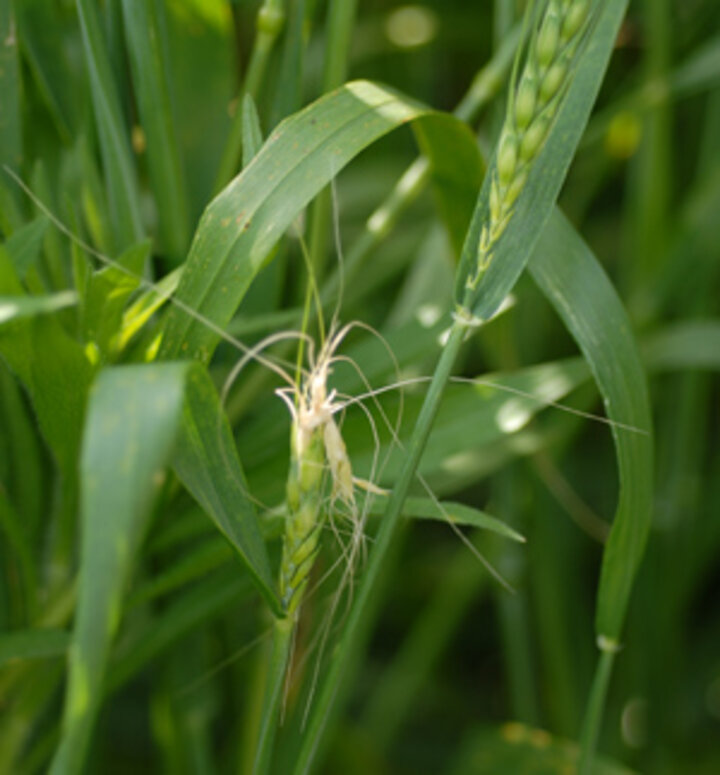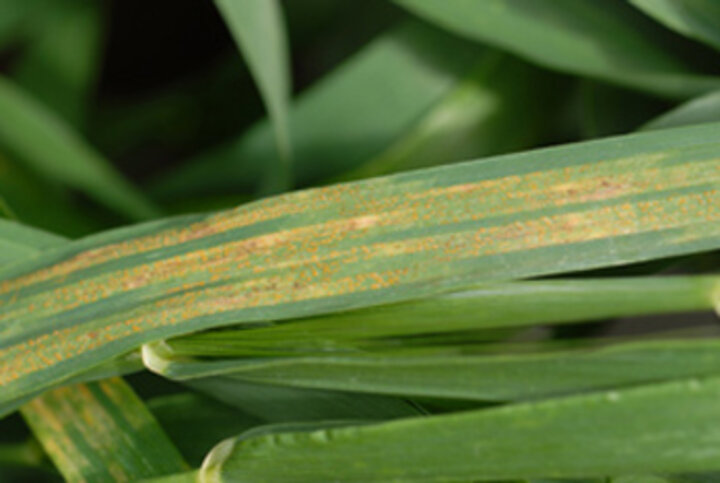
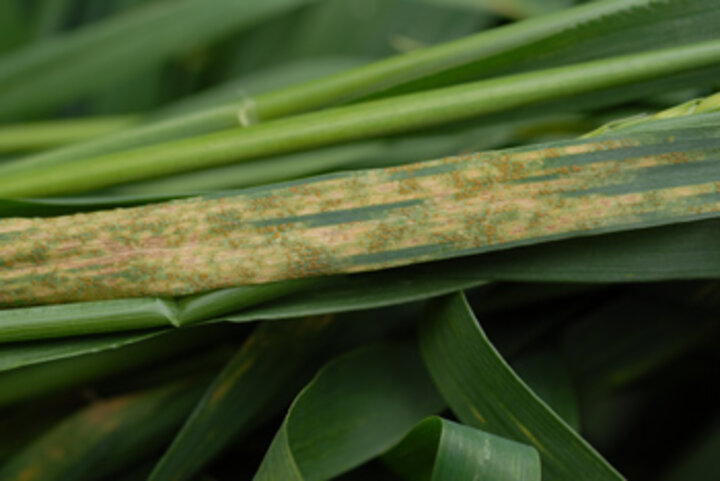
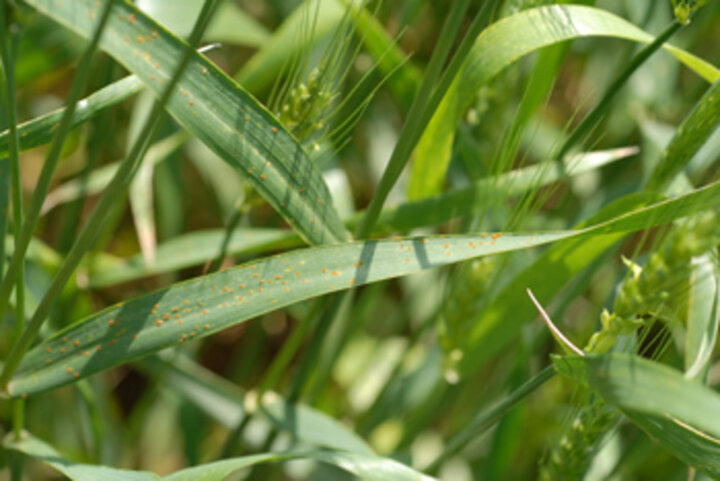
May 18, 2007
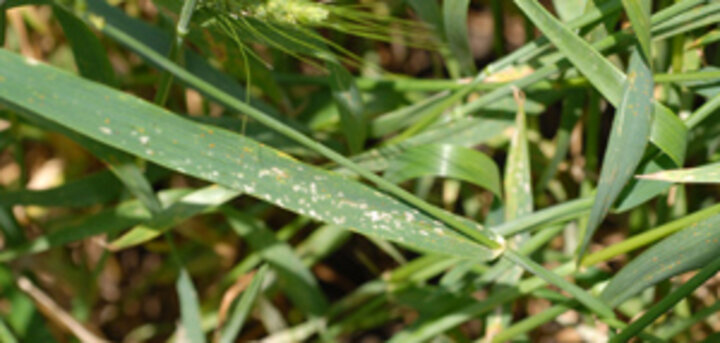
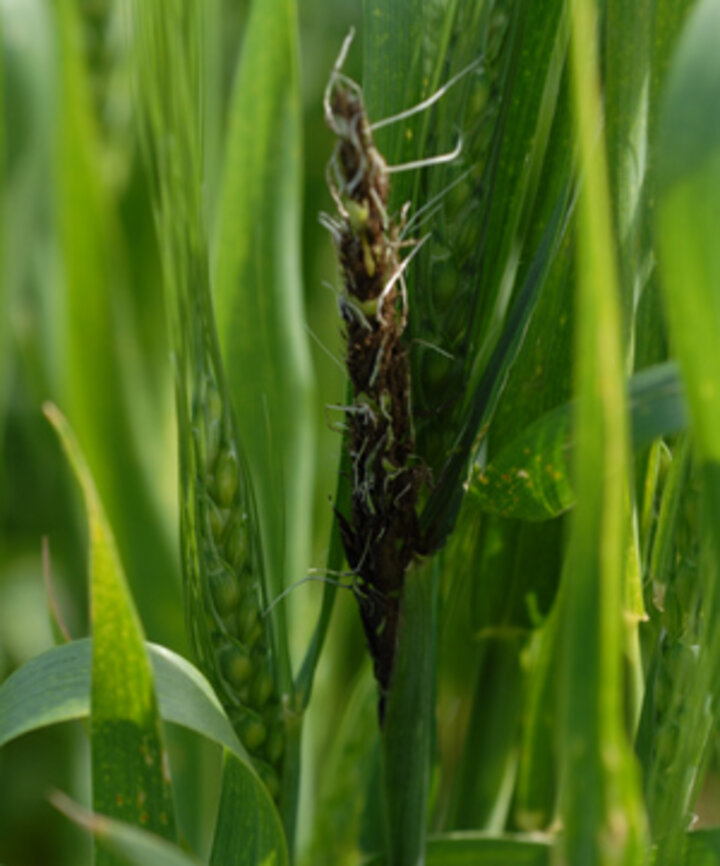
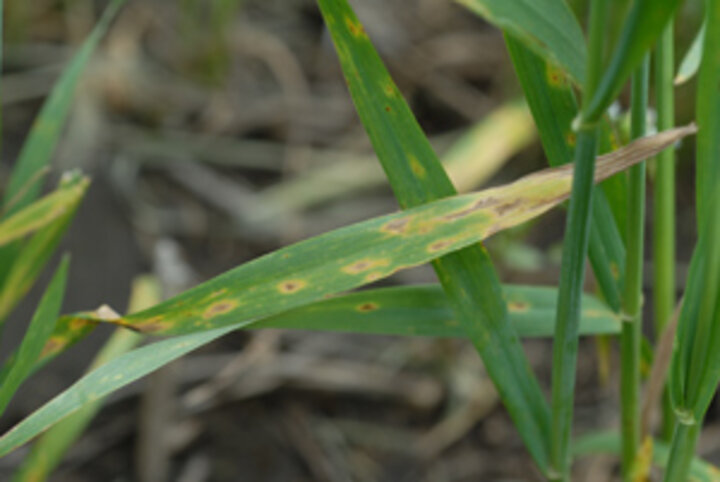
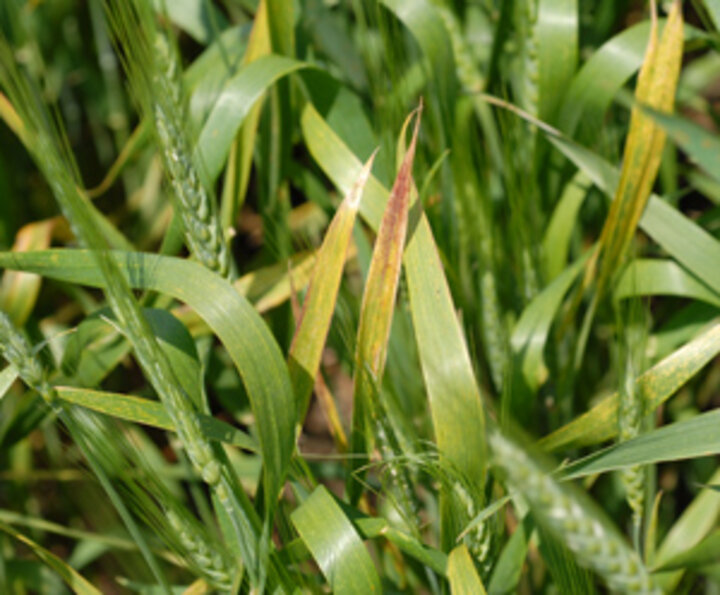
Leaf rust is widespread in the state. This week it was seen as far west as Lincoln County. Incidence is 100% in most fields. It is more severe in southern Nebraska. Near North Platte, severity on lower leaves in some fields was as high as 70% on May 16. In a grower's field in Webster County, leaf rust was visible on the flag leaf on May 17 (Figure 3) with up to 10% severity. In Saline County on May 14, the flag -1 leaf had about 5% leaf rust severity in one grower's field.
Powdery mildew (Figure 4) has been found in varying degrees of severity in every wheat field we visited. Fields with dense canopies have the highest severity.
Loose smut (Figure 5) can be seen only after heading. Several fields are showing loose smut in south central and southeastern Nebraska. Incidence in these fields ranges from trace to about 5%.
Tan spot (Figure 6) also has been seen in many fields, especially on the lower leaves.
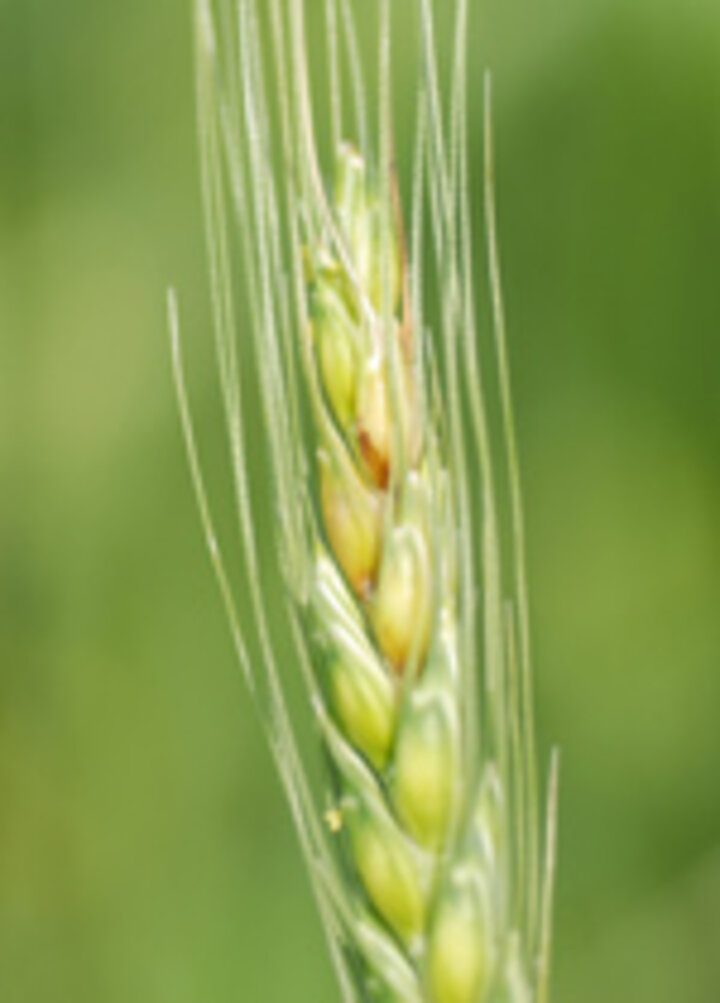
A disease that is widespread in many fields this year to an extent that has not been seen in recent years is barley yellow dwarf. It is caused by barley yellow dwarf virus, which has a wide host range including wheat, barley, oats, and many wild and cultivated grasses. Once the plant is infected, nothing can be done to rescue it. The virus is transmitted by aphids during the fall and spring. Symptoms occur in spots in the field reflecting the feeding patterns of aphids. It causes dwarfing and bright golden yellowing on affected leaves. This yellowing usually starts from the leaf tip or margins and progresses toward the base and is often accompanied by a red to purple color in wheat (Figure 7).
Barley yellow dwarf is favored by cool moist weather which favors grass and cereal growth as well as aphid multiplication and migration. The wet and cool weather we have had in April and May likely contributed to the barley yellow dwarf epidemics we are seeing.
Other problems we observed in various fields include discoloration on wheat heads similar to that caused by Fusarium head blight (scab) (Figure 8), distortion of heads similar to that caused by growth-regulating herbicides (Figure 9), freezing injury (Figure 10), hail damage and yellowing similar to that caused by lack of nutrients.
Stephen Wegulo, Extension Plant Pathologist, Lincoln
Duane Lienemann, Extension Educator, Webster County
Randy Pryor, Extension Educator, Saline County
Jennifer Rees, Extension Educator, Clay County
Julie Breathnach, Research Technologist, Lincoln
John Nopsa, Graduate Student, Lincoln

